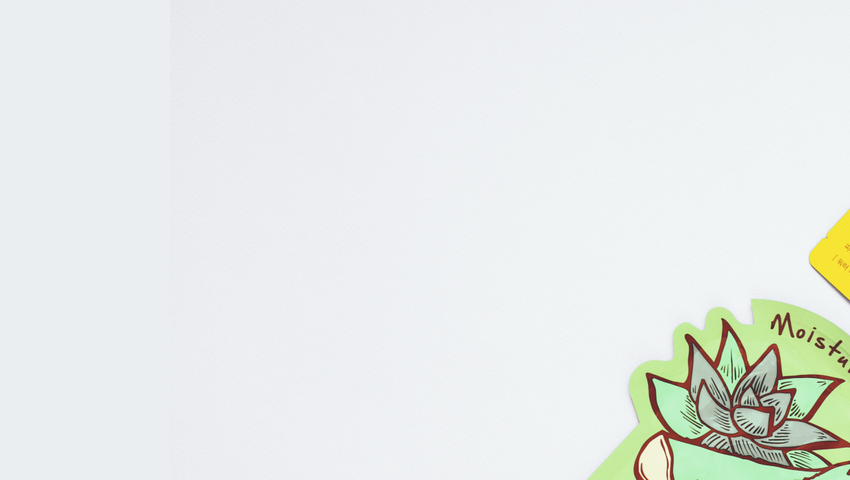
Asia: Eldorado for beauty brands
The entire beauty industry has its eyes set on Asia. The continent is both a source of inspiration, with South Korea, and a rapidly expanding market, especially in China and India.
By Bertrand Beauté
Make‑up remover, cleanser, exfoliator, toner, essence, serum, mask, eye cream, face cream and finally sun care. That is, in order, the 10‑step facial care ritual that Koreans meticulously adhere to. The routine is gradually taking over the world, powered by social media and the current wild popularity of Korean culture. We have everything "K", with K‑pop (Korean pop music – remember Gangnam Style? – and the boy band BTS), K‑dramas (series such as Squid Game and Winter Sonata) and even K‑food. Now K‑beauty is the big export. The Chinese have dubbed this massive spread of Korean culture around the world Hallyu, which translates as "Korean wave", a term now adopted worldwide.
"South Korea is currently the most mature country in the world in terms of beauty," reports Delphine Le Louët, an analyst at Société Générale. "The industry’s inspiration comes from there." The #kbeauty hashtag garnered 15.7 billion views on TikTok as of 8 April, a significant increase from less than 10 billion a year earlier. A Global Data study predicts that the South Korean skin care market, worth $8.5 billion in 2021, will grow by 5% per year until 2026. That growth will mainly benefit three companies: the Korean conglomerate LG, with its subsidiary LG Beauty, the local pure player Amore‑pacific, and the world’s No. 1 beauty giant L’Oréal.
Whereas Westerners have long relied on make‑up to conceal the skin’s imperfections, K‑beauty focuses on maintaining healthy skin. That means taking care of one’s epidermis with skin care products that give priority to cleansing and moisturising. "Skin care is less exposed to economic cycles because it is perceived as a necessity, while make‑up is considered more as ‘non‑essential’, i.e., an expense that consumers can cut back on in the event of an economic downturn," says Thomas Patchett of Baillie Gifford. Following the example of K‑pop stars, the prime ambassadors of K‑beauty, Koreans of all genders spare no expense to achieve perfect skin. And they start out at an early age.
"In Korea, the monthly per capita spend on skincare and cosmetics exceeds $100"
Thomas Patchett of Baillie Gifford
Meanwhile, the global cosmetics industry is lured not so much by the local Korean market – already seemingly saturated with more than 2,000 brands – as by the spread of K‑beauty around the world, particularly in Asia. "In Korea, the monthly per capita spend on skincare and cosmetics exceeds $100," Thomas Patchett adds, "compared with just $36 in China. So there’s huge potential for levelling up." That is what is happening in India, Indonesia and elsewhere in Asia.
L’Oréal estimates that the beauty industry will attract more than 600 million new consumers of beauty products by 2030, and the vast majority of them (460 million) will come from North and South Asia, the Pacific, the Middle East and North Africa. "The Asian cosmetics market is the fastest‑growing in the world," Thomas Patchett says. However, experts believe that this growth will not necessarily pass through to local brands. "Despite the many local players in Asia, consumers in these countries are fervently keen on big international brands, which convey a prestigious image," says Marine Dubrac, co‑manager of the Wellness strategy at Thematics Asset Management.
Moreover, Western beauty giants do not hesitate to acquire local companies as they start to make it big – such as L’Oréal, which bought the Korean company Stylenanda in 2018
– or to invest in local stars. In 2019, LVMH‑owned Dior chose Jimin from the Korean group BTS to front the brand, while MAC Cosmetics (Estée Lauder group) made Lisa, the Thai‑born member of the K‑pop group Blackpink, its muse. And in January 2022, the Japanese group Shiseido unveiled a new brand ambassador, Korean singer and actor Kim Woo Seok.
Swissquote Bank Europe S.A. accepts no responsibility for the content of this report and makes no warranty as to its accuracy of completeness. This report is not intended to be financial advice, or a recommendation for any investment or investment strategy. The information is prepared for general information only, and as such, the specific needs, investment objectives or financial situation of any particular user have not been taken into consideration. Opinions expressed are those of the author, not Swissquote Bank Europe and Swissquote Bank Europe accepts no liability for any loss caused by the use of this information. This report contains information produced by a third party that has been remunerated by Swissquote Bank Europe.
Please note the value of investments can go down as well as up, and you may not get back all the money that you invest. Past performance is no guarantee of future results.
